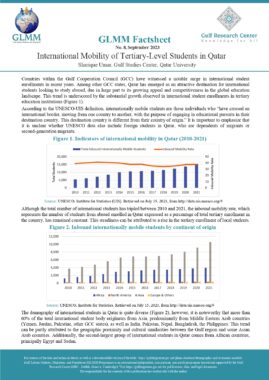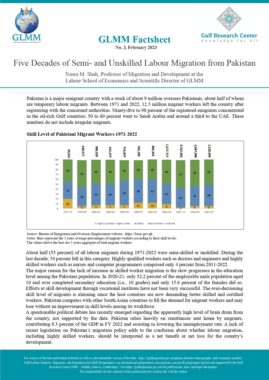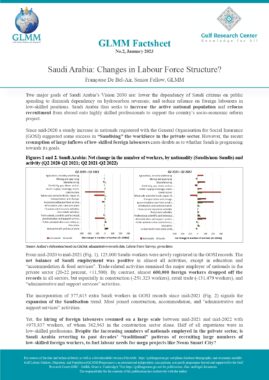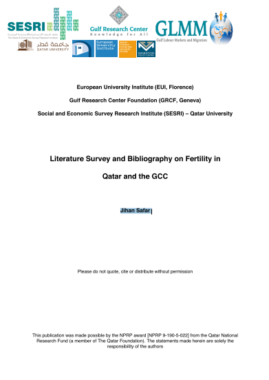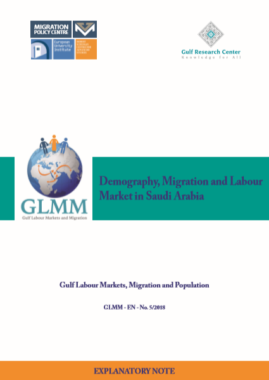Bahrain: Employed population (15+ years old) by nationality (Bahraini/Non-Bahraini) sex and highest educational level (2010)
| Bahraini | Non-Bahraini | Total | |||||||
| males | females | total | males | females | total | males | females | total | |
| Illiterate/ Read only | 2,257 | 1,119 | 3,376 | 18,298 | 7,798 | 26,096 | 20,555 | 8,917 | 29,472 |
| Read & Write | 11,475 | 3,744 | 15,219 | 133,919 | 37,316 | 171,235 | 145,394 | 41,060 | 186,454 |
| Primary | 13,365 | 2,266 | 15,631 | 77,666 | 7,394 | 85,060 | 91,031 | 9,660 | 100,691 |
| Preparatory | 20,168 | 5,194 | 25,362 | 64,165 | 11,489 | 75,654 | 84,333 | 16,683 | 101,016 |
| Secondary | 50,278 | 23,375 | 73,653 | 68,114 | 8,141 | 76,255 | 118,392 | 31,516 | 149,908 |
| Above Secondary/ Diploma | 10,831 | 7,579 | 18,410 | 39,449 | 9,408 | 48,857 | 50,280 | 16,987 | 67,267 |
| BSC or BA. | 9,882 | 11,546 | 21,428 | 24,488 | 4,831 | 29,319 | 34,370 | 16,377 | 50,747 |
| High Diploma | 766 | 796 | 1,562 | 7,177 | 1,641 | 8,818 | 7,943 | 2,437 | 10,380 |
| Masters | 1,128 | 734 | 1,862 | 3,196 | 502 | 3,698 | 4,324 | 1,236 | 5,560 |
| Doctorate | 383 | 112 | 495 | 909 | 198 | 1,107 | 1,292 | 310 | 1,602 |
| Unknown | 17 | 17 | 34 | 13 | 63 | 76 | 30 | 80 | 110 |
| Total | 120,550 | 56,482 | 177,032 | 437,394 | 88,781 | 526,175 | 557,944 | 145,263 | 703,207 |
Source: Central Informatics Organisation (CIO) – Bahrain
ANNEXED NOTE
1. Technical Notes and Definitions
| census year | reference period | implementing institution | implementation method | population covered | |
| 1981 | November 16 | Ministry of Finance Statistics Department |
field interviews | de jure, de facto | all individuals (nationals and non-nationals): 1- present within the country’s borders during time of reference; 2- residing in Bahrain irrespective of where are they at census times |
| 1991 | April 6 | Central Informatics Organisation (CIO) | field interviews | ||
| 2001 | April 7 | field interviews; characteristics of population in collective households (among which labour camps) was obtained from sponsors | |||
| 2010 | April 27 | based on administrative records | |||
Nationality of the person is defined by the passport used to enter the country. A Non-Bahrainis is considered as such depending on the passport used to enter the country (or obtain the visa).
Period of reference for employment refers to the 7-days period prior to the survey.
Population of reference in table: all employed individuals (nationals and non-nationals) aged 15 and above
Employed population includes population in the following categories:
Employer is defined as a person who operates his / her own economic enterprise or engages independently in a profession for trade and hires one or more employees.
Self-Employed is defined as a person who operates his / her own economic enterprise or engages independently in a profession or trade and hires nobody.
Paid Employee is defined as a person who works for a public or private organization and receives regular wages/salary whether in cash or in kind.
Illiterate refers to a person who cannot read or write a brief, simple sentence about his/her daily life in any language.
Read Only refers to a person who can read only but cannot write, such as those persons who have learned to read the Quran.
Read and Write refers to a person who is 10 years or older and passed one of the classes within primary education, but has not obtained any certificate of any formal education. This is a person who has can write and read simple sentences about his/her daily life in any language. This includes a blind person who can read and write using Braille.
Primary education accepts children who are six years old and above, and comprises of six grades (1-6 grade). It also includes adults who are enrolled in literacy classes.
Preparatory education accepts students who have completed and passed primary education, and comprises of three grades (7-9 grades). It also includes adults who are enrolled in advanced fellow-up education.
Secondary education accepts students who have completed and passed primary education, and comprises of three grades (10-12 grades). It also includes adults who are enrolled in advanced strengthening classes.
Above Secondary/Diploma education accepts students who have completed and passed secondary education, and comprises of one or two additional years. The student obtains a post-Secondary diploma that is officially certified.
B.Sc. or B.A. education accepts students who have completed and passed secondary or above secondary/diploma education.
High Diploma education accepts students who have completed and passed Bachelor’s degree, and could be one or two years. The student obtains an officially certified diploma.
Master’s education accepts students who have completed a Bachelor’s or high diploma degrees, and could comprise of one or more years. The student obtains upon graduation a Master’s degree.
Doctorate education accepts students who have obtained a Bachelor’s degree with experience, or Master’s degree or High Diploma, and comprises of two or more years. The student obtains a doctorate upon completion.
Not Stated or Unknown refers to a case where the interviewer does not know or is not certain of the highest level of education of the interviewee.
2. Institution which provides data
Central Informatics Organization, known prior to 2001 as the “Central Statistics Organisation” under the Ministry of Cabinet Affairs.
3. Data availability
Figures and results reported here are available on the Central Informatics Organisation (CIO) website. For Arabic version: (http://www.cio.gov.bh/cio_ara/default.aspx). For the English version: (http://www.cio.gov.bh/CIO_ENG/Default.aspx)
The CIO often provides its figures and estimates through tables in PDF format.
The 2010′ census figures on the labor force can be found: (http://www.cio.gov.bh/cio_eng/SubDetailed.aspx?subcatid=493)
This 2010′ census data is deduced from a larger set of tables that also include employment status.
This 2010′ census data for Bahraini males can be found: (http://www.cio.gov.bh/cio_ara/English/Publications/Census/LabourForce/4.11.5.pdf)
Figures for Bahraini females can be found: (http://www.cio.gov.bh/cio_ara/English/Publications/Census/LabourForce/4.11.6.pdf)
Figures for Non-Bahraini males can be found: (http://www.cio.gov.bh/cio_ara/English/Publications/Census/LabourForce/4.11.8.pdf)
Figures for Non-Bahraini females can be found: (http://www.cio.gov.bh/cio_ara/English/Publications/Census/LabourForce/4.11.9.pdf)
Further detailed data and definitions on the 2010 Census can be found on the census’s separate website: (http://www.census2010.gov.bh/results.php)
Date of access: June 2014
Similar Posts:
- Bahrain: Population (15+ years old) by nationality (Bahraini/ non-Bahraini), sex and highest education level (2010)
- Bahrain: Non-Bahraini population (aged 15+ years old) by age groups, sex and highest education level (2010)
- Bahrain: Population (aged 15+ years old) by nationality group, sex and highest education level (2010)
- Bahrain: Population (15+ years old) by nationality (Bahraini/ non-Bahraini), sex, education level and marital status (2010)
- Bahrain: Employed population (15+ years old) by nationality (Bahraini/Non-Bahraini), employment status, sex and highest educational level (2010)
Tags: Bahrain, Education, Employer, Employment, Female Employment, Foreign Labour, National Labour

































